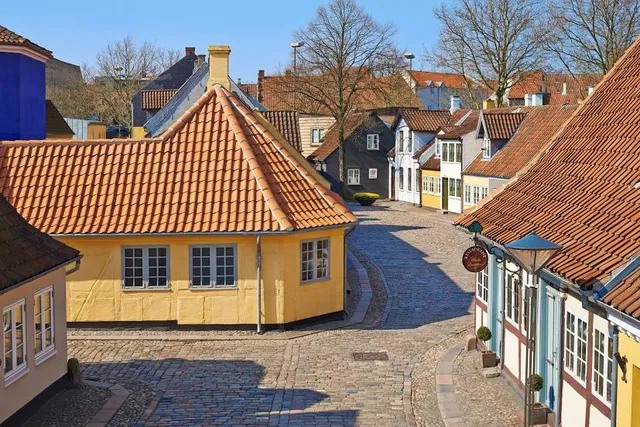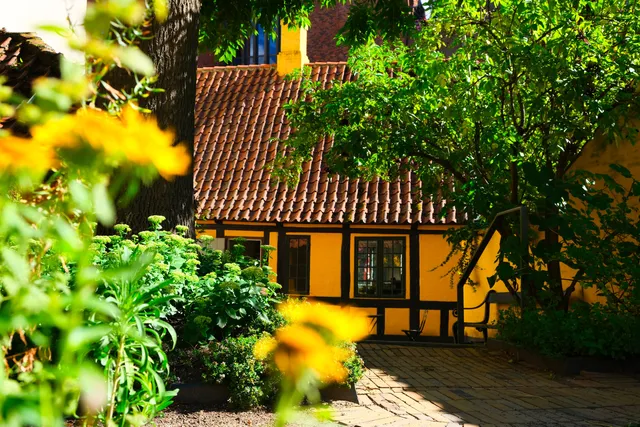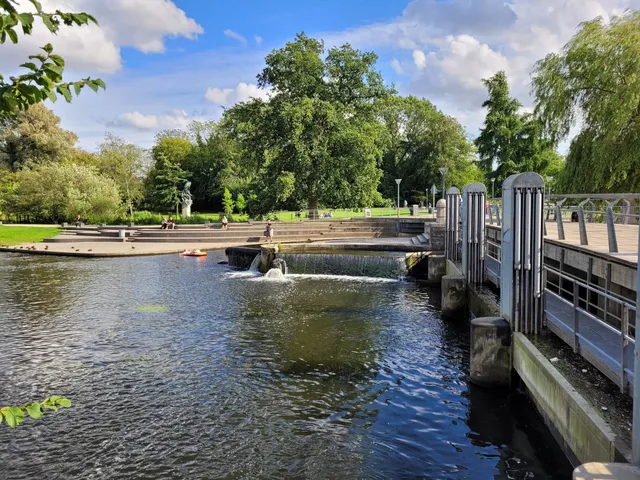St. Canute's Cathedral
Description
St. Canute's Cathedral, also known as Odense Cathedral, is named after the Danish king Canute the Saint, otherwise Canute IV. It is a fine example of Brick Gothic architecture. The church's most visited section is the crypt where the remains of Canute and his brother Benedict are on display.
Ratings
Description
St. Canute's Cathedral, also known as Odense Cathedral, is named after the Danish king Canute the Saint, otherwise Canute IV. It is a fine example of Brick Gothic architecture. The church's most visited section is the crypt where the remains of Canute and his brother Benedict are on display.
Posts
Stunning Odense & the Hans Christian Andersen House/Museum No visit to Odense is complete without a visit to the Hans Christian Andersen Birthplace & Museum, its multimedia tour through the life of this famed author, story teller and poet is truly a must do when in Odense! This interactive tour is extremely well produced and gives a fairly complete inside into the man and his life! His works translated into 180 languages which include such blockbusters as The Little Mermaid, The Tin-soldier are globally recognised fairy tales, which many kids will know! (Just make sure your head phones are fully charged) Of course roaming around the main City Hall square and surrounds, as well as the 11th Century St. Canute’s Cathedral, build in honour of the Danish King by same name is part of our visitations to places of faith & worship at each destination! The first impressions of Odense are impactful and the stuff lifelong memories are made off! Enjoy this little pictorial of our introduction to Denmark! #scandinavia #denmark #odense #museum #hanschristianandersen #stcanutescathedral #farmersmarketodense #europeantour #touristystuff
This Cathedral is an enchanting place which I consider sacred as the meaning for espiritual people connected to God. It is an architectural master piece, considered the finest Gotic building in Denmark, consisting of a high nave with its bell tower, bricks built. The altarpiece has a magnificent carved work representing the pasion of Jesus Christ, I was lucky to see the back of it which has paintings of Adam and Eve and of the Holy Spirit among others (this area is not open to the public), and even you might listen to the pipe organ while visiting it, aditionally it brings the memory of Hans Christian Andersen as He was baptized in this place, you can find it at the right handside once getting in. The Entrance is free with also a smart gate in its facade, it is not usualy crowded!
Backsteinkirche mit vergleichsweise mächtigem Kirchenschiff, innen weiß getüncht. Ein skurriles Bild - Schlange am Kreuz - scheint mir dort (unten rechts am Altar) am originellsten. Es zeigt ein selten dargestelltes religiöses Motiv, nämlich wie 'die Schlange von Moses erhöht wird wie dereinst Jesus am Kreuz erhöht werden soll' --- doch, wirklich, so besagt es die betreffende Bibelstelle (Joh 3,14.15). Eine recht verzwickte Symbolik. Etwas Besonderes ist auch das Bild vom Zwischenreich, in das die Toten eingehen und am Jüngsten Tag wieder auferstehen (rechts vom Altar hinter der Figur des betenden Herrschers). In der Krypta hingegen gibt es handfesten Legendenstoff in Form von echten Gebeinen zum Angucken. Kurze Erläuterung für Neugierige: Im Alten Testament wird das nörgelnde Volk (so heißt es da) bei seiner Emigration aus Ägypten zur Strafe von Schlangen befallen. Was tun? Moses fragt Gott, und die Erhöhung der Schlange und deren Angucken rettet die Leute dann vor dem Tod -- alles natürlich unter Gottes Anweisung. Im neuen Testament erfolgt daraufhin der Vergleich der Erhöhung der Schlange mit der späteren Erhöhung des "Menschensohns" durch das Kreuz. Nach gängiger Interpretation soll die Schlange dabei die Sünden symbolisieren, die Jesus für die Menschen auf sich genommen habe. Ganz naiv kann man die Darstellung natürlich auch als Warnung verstehen, sich gegen von Oben Zugedachtes aufzulehnen. Eine weitere Darstellung von Schlangenbefall und Schlangenerhöhung findet sich übrigens als Holzrelief im Chorgestühl von Roskilde.
St. Canute's Cathedral (Danish: Odense Domkirke or Sct. Knuds Kirke), also known as Odense Cathedral, is named after the Danish king Canute the Saint (Danish: Knud den Hellige), otherwise Canute IV. It is a fine example of Brick Gothic architecture. The church's most visited section is the crypt where the remains of Canute and his brother Benedict are on display. Worth visiting when you are in town.
We visited the cathedral located Odense while en route to Renders on the 9th May 2023 (Tuesday). The cathedral was built in 11th century and named after Dannish King Canute. It's interesting to know about King Canute and his adventure. Do make a visit while you are in Odense, which is more enriching apart visitng the shopping outlets.
Beautiful and well maintained I went there in late morning on weekday and there were not many people I recommend to walk around and check out their garden at the back. It was green, clean and nice. There were a few benches suitable for sitting down and relaxing Entrance is free
Nearby Attractions Of St. Canute's Cathedral
H. C. Andersens House
Danmarks Jernbanemuseum
Hans Christian Andersen's Childhood Home
Munke Mose
Odense St.
King's Garden
Eventyrhaven
St. Alban's Church
Tidens Samling
Odense Castle

H. C. Andersens House

Danmarks Jernbanemuseum

Hans Christian Andersen's Childhood Home

Munke Mose
Nearby Restaurants Of St. Canute's Cathedral
Den Gamle Kro A/S
King's Sushi & Cafe Odense
Marcantonio Trattoria - Pizzeria
Café Skt. Gertrud
Kok & Vin
MASH - Restaurant Odense
Restaurant Oluf Bagers Gaard
Nelle's Coffee & Wine - Overgade
Me - Mother's Street Food
Café Kosmos
Den Gamle Kro A/S
King's Sushi & Cafe Odense
Marcantonio Trattoria - Pizzeria
Café Skt. Gertrud

